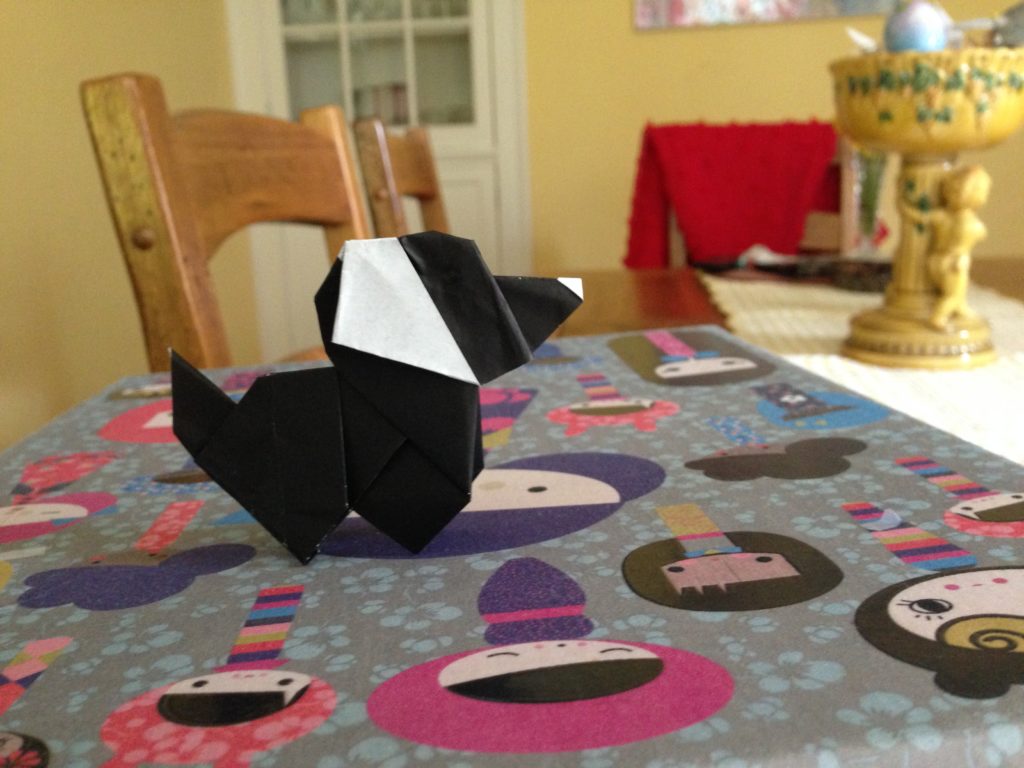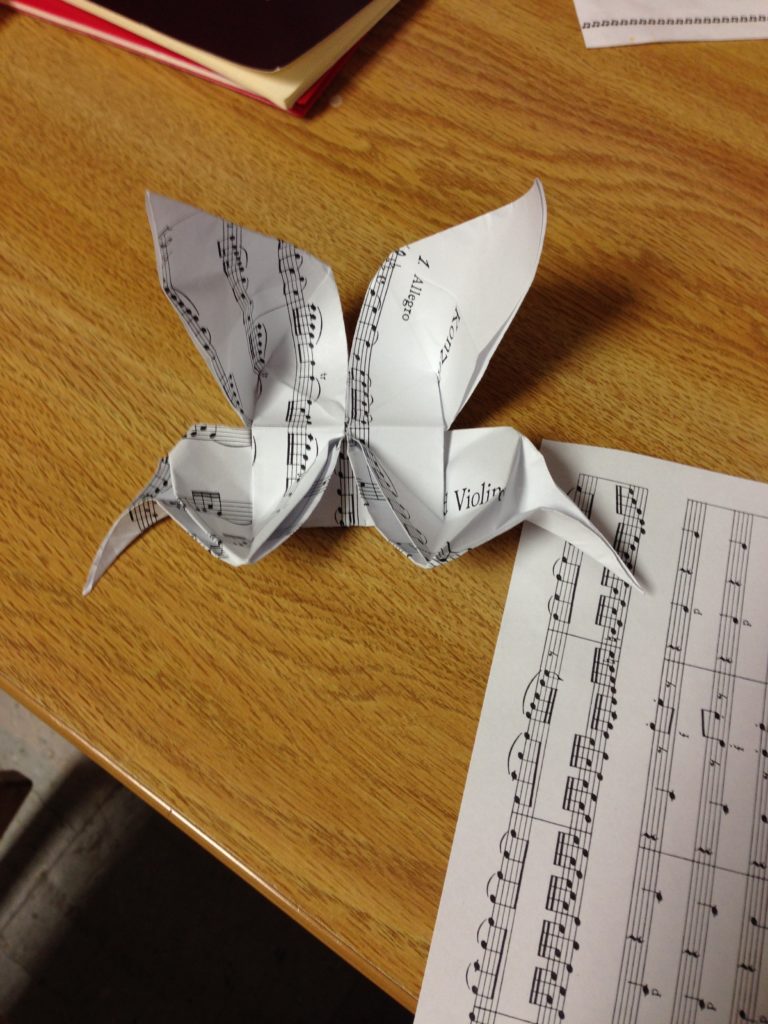by Jarrett Hoffman
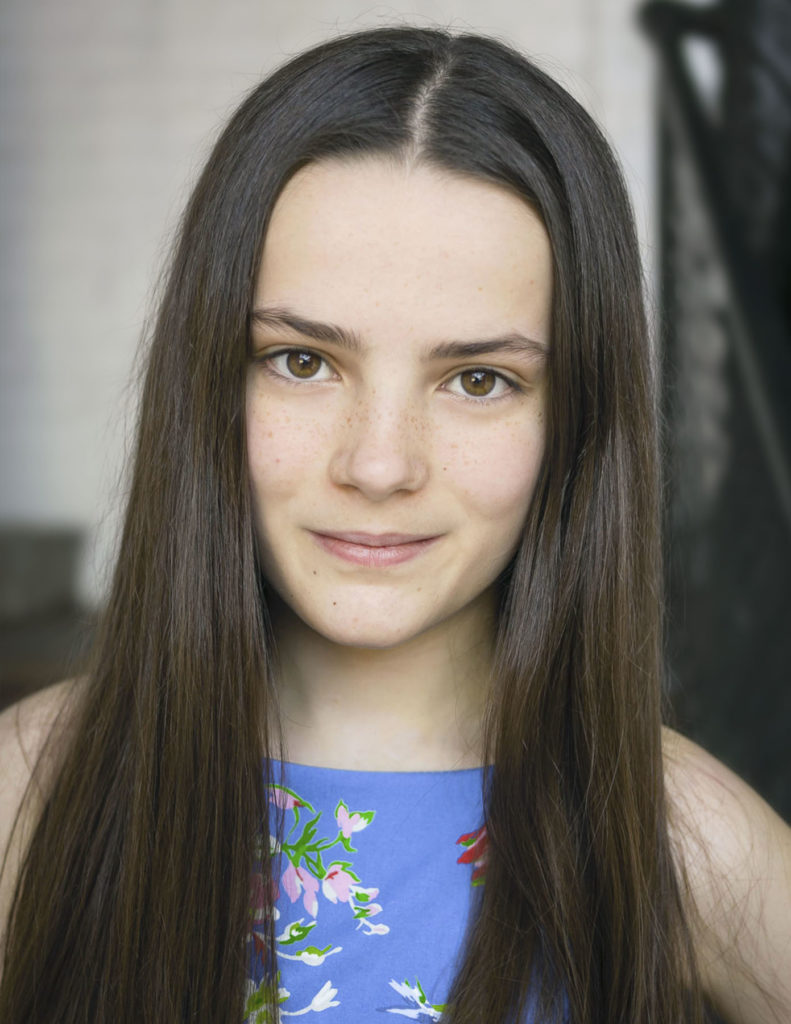
A member of the Cleveland Orchestra Youth Orchestra, Béthoux is also a co-winner of its 2018 concerto competition. That’s earned her a solo appearance in the Samuel Barber Concerto during the ensemble’s 8:00 pm concert this Friday, November 16 at Severance Hall, led by music director Vinay Parameswaran.
And it might be what Béthoux says, or maybe it’s something that comes across in her voice, but it’s clear that her interest in classical music isn’t at all obligatory, self-important, or resumé-stuffing. It’s just love.
Of Barber’s music, she said, “He uses these colors and harmonies which strike the heart and really connect with the soul. This concerto just captivates you the entire time. It’s this journey of what human beings can feel, and it’s so special to be able to play it, express what I feel, and bring that to people.”
(It seems important to point out a quote from Itzhak Perlman that Béthoux includes in her bio: “The violin is a replica of the soul.”)
Her description of the concerto’s second movement struck me. “You hear that oboe solo and it just kills you — it makes you cry. And when the violin comes in, it’s a light of hope. I always pictured it as though you’re in a cave in complete darkness, and when the violin enters there’s a little tiny speck of light. You’re slowly walking toward it — and then it completely explodes.”
She compared the opening of the first movement to that moment when the curtains rise before a play. “Then it winds through different phases, getting darker, more melancholy, and thoughtful.” Of the third, Presto in moto perpetuo, she said, “It’s just splashy and breathless — it’s lightning-fast really.”

One of Béthoux’s hobbies is origami. Above: a rose folded out of the first page of the Barber Concerto, made for Patinka Kopec, one of her teachers at the Heifetz International Music Institute last summer.
If Béthoux seems to feel music in an especially powerful way, it might be because she’s been taken with the violin since age two.
“I have an uncle who plays in the Monte Carlo Orchestra, and he came to visit from France,” she told me. “According to my mom, I was doing my own thing as a typical two-year-old. Then he started to play, and I froze — I just stared at him, and I was completely captivated. I fell in love with it, and I couldn’t stop talking about playing the violin until I really started, which was when I was five.” Now, looking back over the years, she said, “Music has been in my life forever. I don’t remember any moment passing when there hasn’t been music.”
It’s not just her uncle — Béthoux’s family is full of trained musicians. “I have another uncle who is a chemist and composer, and he teaches in Geneva,” she said. “My aunt teaches violin in France, my mom is a pianist and double bassist, and even though my dad is a doctor, he also studied some piano. So yes, it’s a musical family.”
Speaking of those Gallic relatives, I brought up the unmistakable Frenchiness of her own name. She laughed. “My parents were born in France, and so were my brother and sister — they moved here before I was born. But yes, we are French.”
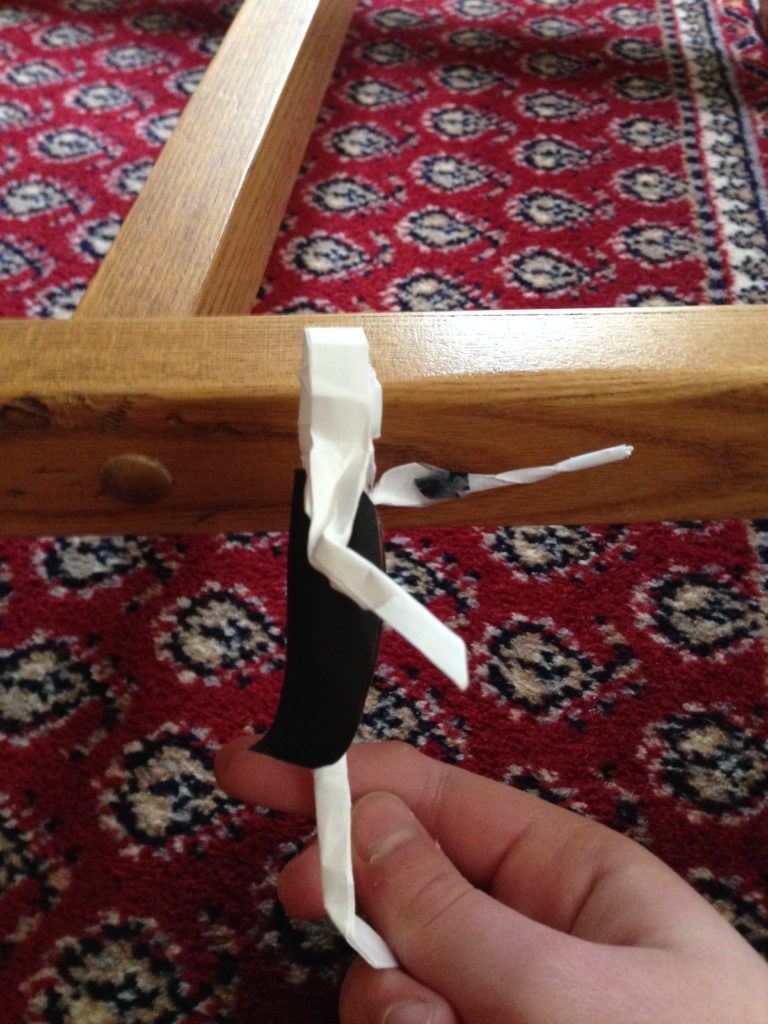
A conductor, made for Vinay Parameswaran after last May’s COYO concert
Béthoux praised her current teachers: Philip Setzer, a founding member of the Emerson Quartet, and Jessica Lee, assistant concertmaster of The Cleveland Orchestra. “They’re incredibly inspiring to me,” she said. “I feel so fortunate to be learning from them. Every lesson they blow my mind.” She also made sure to mention a former teacher: TCO violinist Isabel Trautwein. “She’s a very special person in my life who has guided me throughout my entire musical journey so far, since I was five.”
Another mentor she pointed out is Jennifer Conner, her theory teacher through the CIM Preparatory program. “She’s also a composer, so often in lessons she’ll relate theory to how composers use it, and what it can convey,” Béthoux said. “I believe that we performers are kind of the messengers between the composer and the audience — we’re bringing to life what they wrote down — so to know what they were feeling at that moment is something that’s priceless.”
Béthoux is also the composer of a few pieces herself, as well as a cadenza for the first movement of Mozart’s Third Violin Concerto. “That was quite interesting for me — taking motives from the piece and putting them together in your own way.”
This fall marks the start of Béthoux’s third year in COYO, an experience she’s treasured. “The way we connect — it’s hard to describe in words. Of course we’re always playing for the audience — bringing these emotions and this amazing music to them — but we’re also playing for each other. So when you’re on that stage with all of these incredible young musicians, you feel an amazing connection.”
Through COYO, she’s been thankful to be coached by members of The Cleveland Orchestra and to learn from music director Vinay Parameswaran. “We’re taught things we haven’t thought of before, and come to see from these different perspectives. And we cover incredible repertoire that Vinay picks out. I’ve learned so much — not just about orchestral playing, but things I can incorporate into solo and chamber music.”
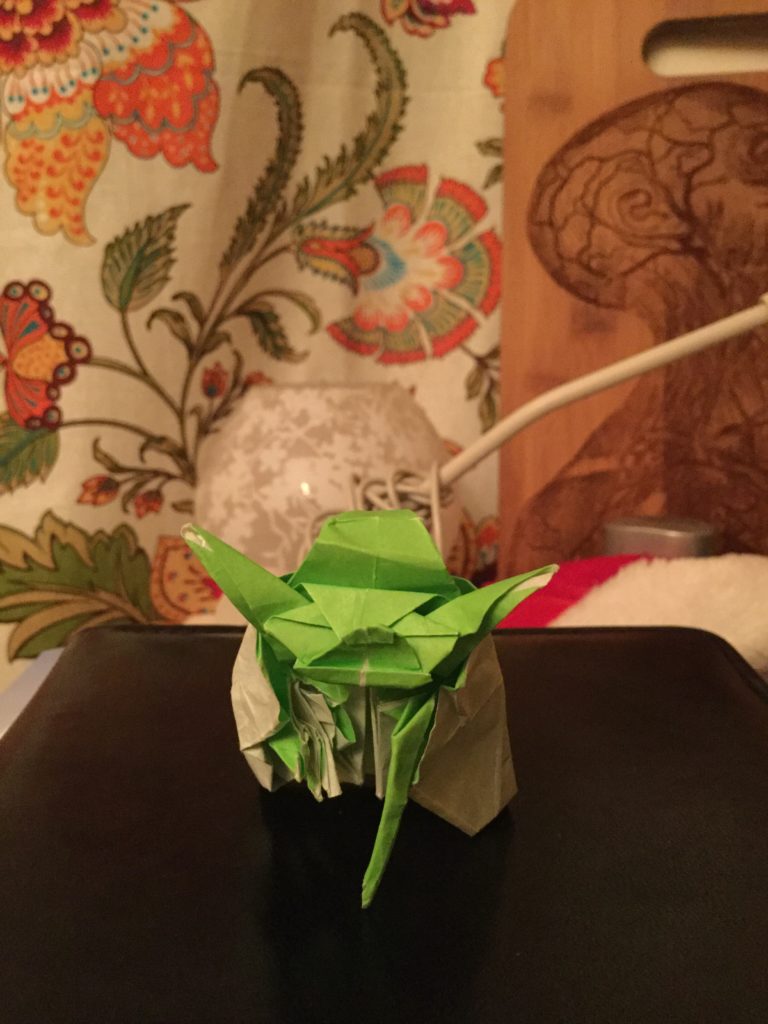
Yoda, made for former COYO conductor Brett Mitchell, who Béthoux said
“frequently made Star Wars jokes during rehearsals”
Aside from practice, rehearsal, and homework, Béthoux spent this past weekend occupied with two of her biggest hobbies: reading and making origami.
“Let’s see, what was I reading?” she said. “I really enjoy fantasy and science fiction, and actually biographies — I’m reading one about Brahms. Another book I’m going to start soon is an autobiography by Nathan Milstein, the violinist. I also love books that are based on World War II, and I was recently reading one about a British spy.”
And her origami? “I fold a variety of things — this weekend I was folding animals,” she said. “I find origami so intricate. And it’s kind of like music. You can just fold something, of course, but if you’re really paying attention to the details, you can create a beautiful piece of art. I find it very fascinating to experiment with. And I’ve always loved making things with my hands.”
Following our conversation, Béthoux sent me the above pictures of her origami — my request. But she also had a few last musical thoughts she wanted to share. Here she wrote about silence:
I think that silence is surprisingly an extremely important part of music. This idea first occurred to me this summer, after one of my teachers, Hagai Shaham, shared a fascinating thought with me: we live in constant noise — even the slightest buzz of electricity, or nature shifting around. When one first steps into a desert, there is a complete silence. Nothing. Emptiness. Then, one starts to notice small noises, such as one’s breath, the wind on the sand, a lizard scurrying across a rock.
This translates to music. If there were no silence, the music would not be completely alive. It helps it breathe and be free. It also creates these special moments where one is completely inside this whole other world with the music, captivated, unable to let go right away.
Friday’s program also includes John Adams’ The Chairman Dances (Foxtrot for Orchestra from Nixon in China) and Brahms’ Symphony No. 2, and will be preceded by a chamber music concert in Reinberger Hall at 7:00 pm.
Published on ClevelandClassical.com November 13, 2018.
Click here for a printable copy of this article




